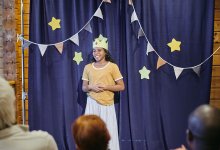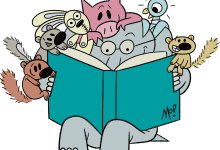Creativity
Not sure where to start with teaching creativity? Discover how to ignite students’ interests and passions. Then, stand back, and watch great things emerge.
5 Techniques to Promote Divergent Thinking
Encouraging students to generate many solutions to a particular problem leads to more creative thinking and better problem-solving.502Creative Ways to Demonstrate Learning
Competency-based assessment allows students the freedom to develop creative expressions of their learning.13 Formative Assessments That Inspire Creativity
Sometimes mixing in formative assessments that go a step beyond exit slips and low-stakes quizzes can inject some fun—and creativity—into learning.4.1kMo Willems on the Lost Art of Being Silly
The author of Don’t Let the Pigeon Drive The Bus! chats with us about creativity, drawing as empathy, and letting kids “do 51 percent of the work.”27.7kThe Spatially Gifted—Our Future Architects and Engineers—Are Being Overlooked
Though they have the potential to excel in many fields, we’re neglecting a large body of students with a unique set of skills.15.1kGuiding Students to Develop Multimodal Literacy
Teachers can offer a variety of literacy-focused projects that allow students to display their critical thinking skills in creative ways.320Transforming a School Through Arts Integration
Structuring a school around the arts can help students excel academically and develop social and emotional skills.13.6k4 Ways to Develop Creativity in Students
Creativity is a valuable skill, and there are common strategies teachers can use to help students develop it.15.4kHow—and Why—to Introduce Visual Note-Taking to Your Students
Visual note-taking allows information to be processed by the brain in three different ways.7.1kHigh School Students Thrive When Given Choices in English Class
ELA teachers can engage students by encouraging them to challenge themselves and discover the joy of learning.2.4k6 Must-Watch TEDx Talks to Kick Off the School Year
In less than 20 minutes each, these six brilliant TEDx Talks explore topics like chronic exhaustion, cultural identity, and emotional intelligence, among others.4.8kCreativity and Academics: The Power of an Arts Education
Increased self-confidence and self-understanding, enhanced communication skills, and improved cognition are among the many reasons for teaching the arts.13.1kUsing Drawings for Formative Assessment
Asking middle and high school students to sketch something they’re learning can give teachers a clear sense of what they do and don’t understand.3.2kTeaching the Writer’s Craft With Micro Mentor Texts
Penny Kittle shares a lesson plan that uses very short mentor texts to foster students’ love of writing and confidence in their work.408Creating Videos to Explore Literary Analysis
Making a short video can be a powerful opportunity for students to explore a reading in a different way from writing an essay.357














